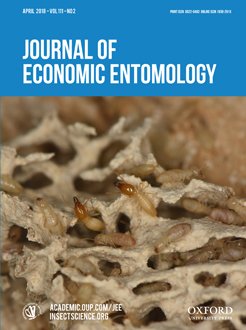Emerald ash borer (EAB), Agrilus planipennis (Fairmaire; Coleoptera: Buprestidae), is decimating ash trees (Fraxinus spp.) in North America. Combatting EAB includes the use of insecticides; however, reported insecticide efficacy varies among published studies.This study assessed the effects of season of application, insecticide active ingredient, and insecticide application rate on green ash (Fraxinus pennsylvanica Marsh.) (Lamiales: Oleaceae) canopy decline caused by EAB over a 5- to 7-yr interval. Data suggested that spring treatments were generally more effective in reducing canopy decline than fall treatments, but this difference was not statistically significant. Lowest rates of decline (<5% over 5 yr) were observed in trees treated with imidacloprid injected annually in the soil during spring (at the higher of two tested application rates; 1.12 g/cm diameter at 1.3 m height) and emamectin benzoate injected biennially into the stem. All tested insecticides (dinotefuran, emamectin benzoate, and imidacloprid) under all tested conditions significantly reduced the rate of increase of dieback.
How to translate text using browser tools
21 February 2018
Seven-Year Evaluation of Insecticide Tools for Emerald Ash Borer in Fraxinus pennsylvanica (Lamiales: Oleaceae) Trees
Emily N. Bick,
Nora J. Forbes,
Christopher Haugen,
Grant Jones,
Shawn Bernick,
Fredric Miller
ACCESS THE FULL ARTICLE
It is not available for individual sale.
This article is only available to subscribers.
It is not available for individual sale.
It is not available for individual sale.

Journal of Economic Entomology
Vol. 111 • No. 2
April 2018
Vol. 111 • No. 2
April 2018
emerald ash borer
Fraxinus
management
systemic insecticide




